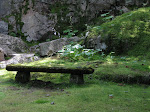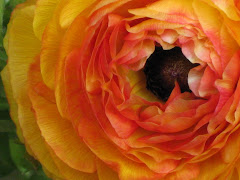Simple research into the production of artificially made ingredients will turn you off of them too (spoiler alert). Vanillin, the artificial vanilla flavor, is made from paper mill waste. That smell alone will have you looking again at the labels on your food packaging.
FD&C food colors are petroleum by-products, often called tertiary products. Rather than waste, the clever chemists at oil refineries figured it would be productive ($$$) to make other products after gasoline, rubber and plastics. Of course, they just put the leftovers in our food. Yum.
However, there are a few things that have been difficult to replace in our kitchen cupboard. Marshmallows (yes, Kraft's Jet Puffed have blue dye to make them whiter). M&Ms. Girl Scout cookies.
Why Girl Scouts of America has not transitioned away from artificial ingredients, I'm not sure. Even with a Girl Scout in the house, we skip ordering a year-long supply of Thin Mints, Do-si-dos and Samoas. There are plenty of peanut butter cookie alternatives that are much better than Do-si-dos. Whole Foods sells a brand of cookie called "Back to Nature" whose Fudge Mint cookies have the same crunch as Thin Mints. But Samoas, there is nothing similar in any of the stores I now frequent.
After declining to order Samoas for my daughter today, I decided to hunt for a recipe to make them from scratch. These - from the blog "Babble" - look like amazing treats. I'm anticipating that they will likely taste much better than the original Samoas!
Homemade Girl Scout Cookies: Samoas
2 sticks (1 cup) unsalted butter at room temperature
1 cup superfine sugar (or granulated)
1 large egg
1/2 teaspoon pure vanilla extract
1 teaspoon kosher salt
3 cups unbleached, all-purpose flour
Dipping Caramel (recipe follows)
1 cup unsweetened shredded coconut (available at health food stores)
12 ounces of chocolate chips
1. In the bowl of an electric mixer fitted with the paddle attachment, cream together butter and sugar. Beat until light and fluffy. Add in egg and beat until well incorporated, scraping down the bowl, if necessary. Add in vanilla. Beat until smooth. With mixer on low, add in salt and flour. Mix until completely incorporated and dough is uniform. Pull dough together and shape into a cylinder with a diameter of about 2 1/2 inches. Wrap in parchment paper and freeze for at least 25 minutes.
2. Preheat oven to 350 degrees. Slice dough into 1/8 inch disks and place on baking sheets, about an inch apart. Once you have made 30 cookies, wrap up the cookie dough, freeze, and save for another time. Use a tiny circle shaped cookie cutter or a large round cake decorating tip to cut a hole in the center of each disk. Refrigerate for an additional 10 minutes. Bake for 8 minutes, or until crisp. Let cool completely.
3. Add coconut into the caramel. Warm the caramel in the microwave for about 10 seconds if necessary. Take cooled cookies and gently dip them completely in the caramel. Place on a parchment paper lined baking sheet. Freeze until set, about 5 minutes.
4. Melt chocolate in a microwave safe bowl in 30 second intervals, stirring well after each interval, until fully melted. Place the caramel coated cookies in the chocolate. Use a fork to pull them out of the chocolate and place them on a parchment line cookie sheet. Use the chocolate still on the fork to drizzle stripes over the top of the cookies. Refrigerate until set.
Dipping Caramel
1 1/2 cups granulated sugar)
4 tablespoons corn syrup
6 tablespoons water
pinch of salt
6 tablespoons butter
6 tablespoons cream (DO NOT use plain whipping cream)
1 1/2 teaspoons pure vanilla extract
1. In a heavy bottomed saucepan with high sides, combine sugar, corn syrup, water, and salt. Whisk until combined, and set over medium-low heat. Swirl the pan every now and then to help distribute the heat. Use can use a pastry brush dipped in water to brush the sugar crystals down the sides of the saucepan. When the sugar dissolves completely, raise the heat to medium. When it comes to a boil, watch very carefully for the bubbles to become more viscous (this means that the water has evaporated and that it is ready to go through the candy stages). As it is bubbling away, you want it to turn a deep amber color. When it does, remove the heat and, working quickly, use the spoon to scoop up a small amount of the candy and drop it into the small glass of water. If the blob turns hard like lollipop, then it is ready. If the blob is still soft, put the pan back on the heat. Keep testing until the candy is hard. Remove from heat.
2. Whisk in butter, 6 tablespoons of cream, and vanilla (Careful here, as the mixture should bubble violently for about 10 seconds). If the caramel isn’t smooth right away, return the pan to low heat and whisk until smooth.




bless you Caroline! xxx
ReplyDelete